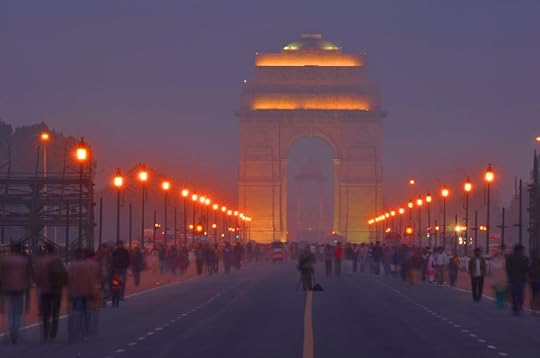Winters of the North!

It is that time of the year where summers would transcend into a short-lived Autumn and then the short-lived fall would sublimely converge into full-blown winters. This grey period, a fleeting period when it has just started to get cold in North, is the most beautiful time of the year. It is the time when twilights would get slightly chiller than usual, the kinds one would want to take out one’s pashmina stole and wrap it around before going for evening walks in a cotton Tee.
The kind of cold that sometimes is accompanied by a little breeze, full of the sweet smell of Parijaat. A smell that’s so synonymous with festivity that Winters would eventually bring along. It is a time of utter confusion because one would juggle between an impulse of turning on the fan to switching it off almost immediately and getting the right temperature of AC is a constant struggle during this time. It this time around you know very soon it will be time to bid adieu to AC’s and fans at least until next year, and the former would pave way for another ritual opening bed trunks and reaching out for woolens and this would invariably fill the room with nostalgia synonym naphthalene.
Winters’ beginning is also marked by a strong shift in the food namely vegetable, fruits and delicacies. You would see colorful signboards popping around in localities and local market catering to local winter delicacies like Carrot Cake, Peanut Chikkis (solidified peanut jaggery and sesame bars) and the famous mustard saag.
It is that time of the year when sundowners would have a foggy transition into nights. A beautiful sheet of fog would cover the night and one would be able to spot the diffused shimmer of Chinese lights that is visible almost everywhere in the colony indicating the impending winter and the joy of Diwali it brings along.
Talking about festivals, this is also that time of the year where festivals would start from right from Ganpati, to Navratri (celebrated as Garba, Durga Puja, Ramlila skits across different regions of India) culminating into Dussehra, followed by Diwali and the Indian Wedding season (auspicious time of the year).This whole quarter of the year ; the festivity is just in the air and quite literally so for the air is filled with delicious fragrances coming from scrumptious food being prepared in various community kitchens or the local pandals (enclosed areas in public places that serve tableau for various festivals and is often free for public to visit), or the lightening & the décor that covers an entire neighborhood along with individual houses or the festive music sounds of Garba & Dandiya beats, Ululu (an imitation of sound of owls which is considered auspicious), dhaak and conch sounds at the holy Durga Aarti and dialogues from Ramayana coming from the local Ramlila scenes (enactment of Ramayana). This sheer assortment of music, food, lights, smells, décor & euphoria of the local markets are again overwhelming in a unique flavor that one can and must experience only in Indian winters predominantly in the North of India.



